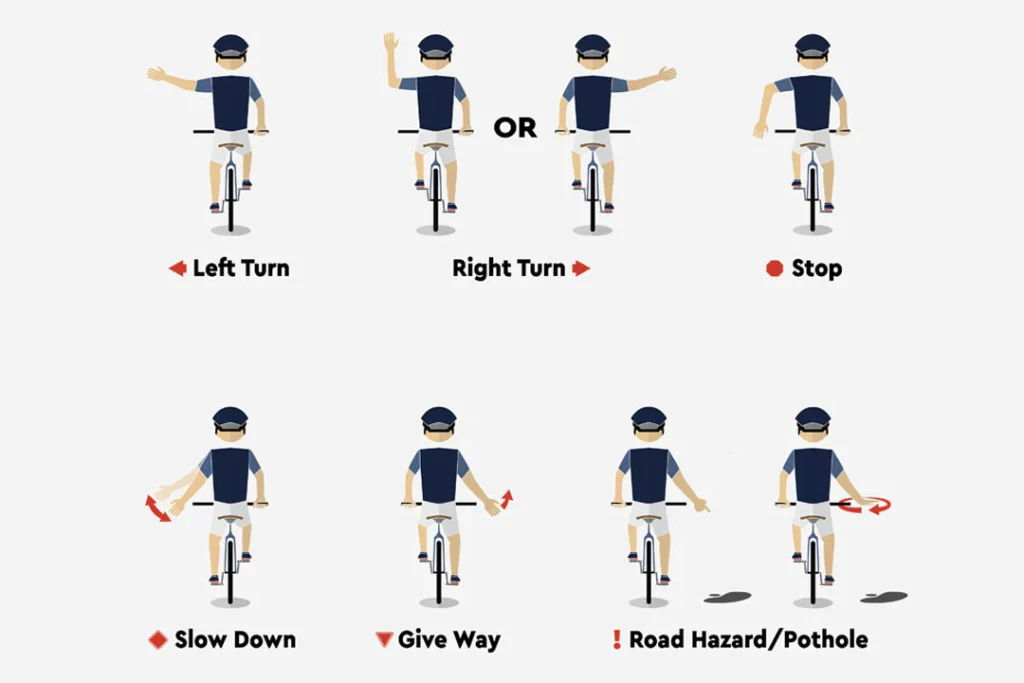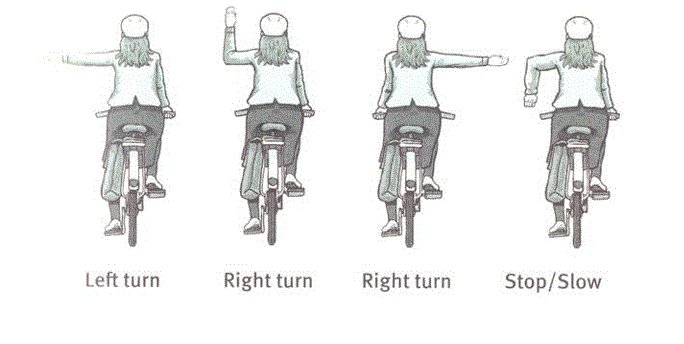Bike Turn Signals: Enhancing Safety and Communication on the Roads
Introduction:
Bike turn signals play a crucial role in ensuring the safety of cyclists and improving communication with other road users. As a cyclist, it is essential to understand the importance of using proper hand signals to indicate your intentions on the road. This article aims to guide you through the significance of bike turn signal, the different hand signals used, and their relevance in mountain biking and road cycling scenarios. Utilizing these signals effectively can enhance safety, minimize accidents, and promote harmonious road coexistence.
1. Understanding the Importance of Bike Turn Signals
Bike turn signals are essential for ensuring the safety of cyclists and alerting other road users about their intended actions. These signals serve as a visual cue, indicating your intentions to turn, change lanes, or stop, allowing motorists, pedestrians, and fellow cyclists to anticipate your movements.

2. The Basics of Bike Hand Signals
Bike hand signals are a universal language among cyclists, providing clear instructions when verbal communication is limited. By using specific hand gestures, you can communicate your intentions effectively. Here are some standard hand signals:
Hand Signals for Left Turns
Extend your left arm straight out to the side, parallel to the ground, when making a left turn. This signals to others that you intend to turn left.
Hand Signals for Right Turns
To indicate a right turn, extend your left arm to the side and bend it upward at a 90-degree angle, forming an “L” shape with your arm. This communicates your intention to turn right.
Hand Signals for Stopping
When coming to a stop, extend your left arm downward, with your palm facing backward. This signals that you are slowing down or coming to a complete stop.
Additional Hand Signals for Cyclists
Cyclists may also use additional hand signals to communicate other actions, such as pointing to road hazards, indicating a change in speed, or acknowledging other cyclists.
3. Bike Turn Signals for Mountain Biking
Mountain biking presents unique challenges and terrain variations that require specific turn signals for optimal communication. Here are some important considerations:
Signaling Turns on Challenging Terrain
Extending your arm fully may not always be possible when navigating tight turns or obstacles during mountain biking. In such cases, use a combination of hand gestures, body language, and verbal cues to indicate your intended direction.
Communication in Group Rides
In group rides, bike turn signals become even more critical for maintaining cohesion and avoiding collisions. Communicate your intentions to the riders behind you using hand signals, verbal cues, or predetermined group-specific signals.
4. Bike Turn Signals for Road Cycling
On the roads, where cyclists often share the space with motorists, using proper turn signals is crucial for everyone’s safety. Here are specific considerations for road cycling:
Sharing the Road with Motorists
Motorists are accustomed to interpreting traffic signals and may not be familiar with bike hand signal. Make your signals extensive and deliberate to ensure their comprehension, allowing drivers enough time to react appropriately.
Interactions at Intersections
Intersections can be challenging for cyclists, requiring navigating traffic and potential blind spots. Signal your turns well in advance, making eye contact with drivers when possible to confirm they have noticed your intention to turn.
5. Advantages of Using Bike Turn Signals
Using bike turn signal offers several benefits to cyclists and other road users. Let’s explore some of the advantages:
Enhanced Safety for Cyclists
By clearly indicating your intentions, you reduce the risk of collisions with other vehicles, pedestrians, or fellow cyclists. Bike turn signals predict your actions, allowing others to anticipate your movements and adjust accordingly.
Improved Communication with Others
Effective use of bike turn signals fosters better communication on the roads. It promotes mutual understanding and cooperation between cyclists and other road users, leading to a safer and more harmonious environment.

6. Tips for Effective Use of Bike Turn Signals
To maximize the effectiveness of your bike turn signals, keep the following tips in mind:
Practice and Familiarize Yourself with the Signals
Regularly practice using bike hand signals until they become second nature. Familiarize yourself with the proper technique and ensure you can execute the signals confidently and smoothly.
Make Signals Clear and Visible
Ensure your signals are easily visible to others by extending your arm fully and positioning it in a way that provides maximum visibility. Use reflective or brightly colored clothing or accessories to increase visibility during low-light conditions.
Anticipate and Signal in Advance
Signal your intentions well in advance, giving other road users ample time to react and adjust their actions accordingly. Signaling early allows everyone to navigate safely and minimizes the potential for accidents.
Read More:
7. Conclusion
Bike turn signals are essential to cycling safety, allowing cyclists to communicate effectively with others on the road. By mastering the proper hand signals, cyclists can significantly reduce the risk of accidents and create a safer environment for all road users. Remember to practice, be clear and visible with your signals, and anticipate the actions of others. Incorporating these habits into your cycling routine offers a more pleasant and secure cycling experience.
FAQs (Bike Turn Signals)
1. Are bike turn signals legally required?
Bike turn signals may not be legally required in all jurisdictions, but they are highly recommended for enhancing road safety. Check your local regulations to understand specific requirements in your area.
2. Can I use electronic turn signals on my bike?
Yes, there are electronic turn signal devices available for bikes that can provide additional visibility and convenience. These devices typically mount to the bike and can be activated wirelessly.
3. Do I need to use a bike turn signal when cycling on bike paths or trails?
While bike turn signals are not typically required on dedicated bike paths or trails, using them is still a good practice. Signaling your intentions helps other cyclists and pedestrians anticipate your movements, reducing the risk of collisions.
4. Can cyclists use voice commands instead of hand signals?
Voice commands can supplement hand signals but should not replace them entirely. Hand signals are universally understood and provide clear visual cues, ensuring effective communication even in noisy or busy environments.
5. How can I educate other road users about bike turn signals?
Leading by example is one of the most effective ways to educate other road users. Consistently using proper bike turn signal and practicing safe cycling habits can inspire others to do the same. Additionally, sharing information through social media, community workshops, or local cycling organizations can help raise awareness about the importance of bike turn signal.
